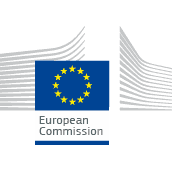
Integration of advanced technologies for heating and cooling at building and district level
Date de clôture : 21 janv. 2016
APPEL À PROJET CLÔTURÉ
APPEL À PROJET CLÔTURÉ
Entrepreneuriat et PME
Innovation
Environnement
Gestion des déchets
IT
Conception
Horizon Europe
Recherche
Topic Description
Specific Challenge:- The energy consumed in the use phase for space heating, cooling and hot water generation represents most of the overall energy consumption in buildings (70-90% of total energy). In order to reduce this consumption, state-of-the-art or new technologies need to be deployed, developed and integrated with high efficiency equipment, both for residential buildings and districts. The share of renewable energies in the energy supply for heating, cooling and hot water generation needs to be increased.
- Cost effective, practical and affordable solutions need to be demonstrated and validated to ensure the success of the retrofitting business. The current potential of energy saving in the EU through renovation activities is very high. In Europe there are two main categories and segments to cover: residential buildings and district networks connecting.
- Regarding the existing residential buildings which represent the largest part of the energy consumption, there is an urgent need to develop integrated solutions that would fit with the current natural gas boilers dominance in the EU market.
- For the district networks connecting buildings, systems should be improved with the support of high efficient control systems that manage better the demand/supply for heating and cooling, and that could fit with a better exploitation of the waste heat available from various industrial or commercial sources.
Buildings retrofitting potential in the EU is huge and existing heating/cooling technologies do not sufficiently enable the integration of new advanced efficient systems. Proposals should embrace two types of buildings: residential buildings and district heating/ cooling connected buildings. For both types, the integration of new reliable systems should be based on new or existing reliable design tools which would facilitate taking the decision on the installation of the best solutions. The research activities should at least address the following areas:
- Integration of advanced heating and cooling technologies such as hybrid systems combining fossil based equipment with renewables systems (cost competitive heat pump kits, solar thermal or biomass systems are attractive combinations).
- Energy waste heat/cool sources that may be exploited in the system.
- Easy installation and integration of such equipment with concern to minimise the maintenance needed and to simplify the logistic.
- Control and monitoring of the entire system, to ensure an efficient match between the supply and demand of energy, including ICT and algorithms embedded in the equipment.
Concerning the district systems, advanced District Heat and Cooling (DHC) systems, i.e. systems operating at low temperatures, must be able to deal with both centralised and de-centralised hybrid sources (e.g. solar thermal, biomass, geothermal, heat pumps, waste heat, excess renewable electricity storage).
Proposals should provide detailed information on the energy data of the buildings (current energy use and proposed reduction with new equipment, the gross floor area of the building together with the targeted annual energy use per m2, broken down by space heating, cooling, domestic hot water production, and lighting). The energy use should achieve at least the national limit values for new buildings according to the applicable legislation based on the Energy Performance of Buildings Directive.
Activities are expected to focus on Technology Readiness Levels 5 to 7 and to be centred around TRL 6.
A significant participation of SMEs with R&D capacities is encouraged.
The Commission considers that proposal requesting a contribution from the EU between EUR 5 and 7 million would allow this specific challenge to be addressed appropriately. Nonetheless, this does not preclude submission and selection of proposals requesting other amounts.
Expected Impact:- Demonstrate a high potential of replication across Europe contributing to large scale market deployment before 2025 with in particular the support of dedicated tool kits, which would be easy to install and would require a limited workforce.
- Cost-effective highly energy-efficient equipment with target reduction of energy consumption of 20 -30 % (including renewables).
- Payback period of below 10 years.
- Best practice examples for the construction sector based on innovation and competitiveness, with benefits for the citizens and the environment.
Proposals should include a business case and exploitation strategy, as outlined in the Introduction to the LEIT part of this Work Programme.
Lien officiel : Disponible pour les utilisateurs enregistrés




S'il vous plaît Se connecter pour voir cette section